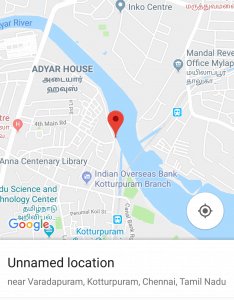There is a new concrete road built on the bund of Adyar River, in violation of key environmental laws. While roads are a welcome development normally, this one is not good news, as mud bunds along estuaries play a key role in preventing flooding.
One can see piles of concrete material and the neatly laid road on the Adyar River bund at Lock Street of Kottur. The road connects two vacant plots, belonging to a real estate agency in the locality.
Escapes authorities’ attention
The Public Works Department (PWD), which is the nodal agency for protection and maintenance of water bodies is oblivious of the latest developments. A PWD engineer, in-charge of Adyar River said, “We have no idea of who is constructing the road. The department has not issued a No Objection Certificate (NoC) for the activity.”
Meanwhile, the Executive Engineer – Adyar Zone of Greater Chennai Corporation said that they would write to the PWD, seeking immediate discontinuation of the activity.
Violation of environmental laws
The construction is a clear violation of the Coastal Regulatory Zone (CRZ) Notification, 2011, as it is near the shoreline of Adyar River. An official from the Tamil Nadu State Coastal Zone Management Authority said that there were no permissions given for the construction activity. He refused to comment further on the action to be taken.
Pooja Kumar of the Coastal Resource Centre said, “The entire stretch of the Adyar River between Kotturpuram bridge and the estuary falls under Zone 2 of the CRZ. Constructions such as these require prior clearance from authority after examining all environmental impacts. Private parties bypassing clearance processes for building roads is unfortunate and highly condemnable.”
While the state government is working on the restoration of Adyar River through Chennai River Restoration Trust, it is unfortunate that a direct violation is witnessed on the very banks of the river.
Mud bunds avert floods
Mud bunds along the river estuary prevent inundation during high tide, monsoons and floods. Explaining its importance, T D Babu, a marine biologist and civic activist, said, “Like coasts, estuaries also have intertidal region. During high tide, water floods into the buildings along its banks. Mud bunds also provide habitat for the estuarine flora and fauna. In return, the flora strengthens the bund and prevents soil erosion.”
Concrete constructions on the river would hamper restoration of the estuary ecosystem along the banks . “The Adyar estuary was once a habitat of mangroves, especially Avecinia Marina. The lone tree on the River near Theosophical society proves the existence of many such species,” Babu explained.
While the estuary awaits restoration by planting of mangroves and its associated species, a construction activity will thwart the efforts, Babu said, stressing on the need to remove the road at the earliest.
Similar activity is witnessed near Thiru Vi Ka bridge, said environmentalists. “A cement road was constructed on the bund near the Thiru Vi Ka bridge, on the southern side. Even though traffic is not diverted, a few vehicles ply here even today. The Coastal zone management authority needs to step up its monitoring activities” Pooja said.


The plot which is nearby was a goldmine for the diggers… Tonnes of sand were dug and transported during the unlimited nights.